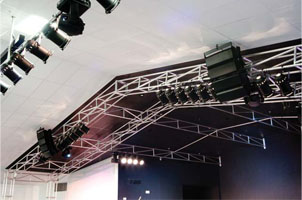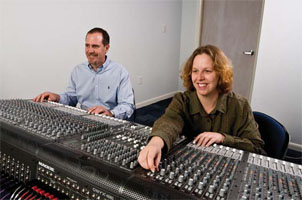Performance Review

- Big-Time Line Array Performance Center Sound On A Budget
- PINELLAS PARK, FL—Not all that long ago, venues that stood to benefit the most from line array technology were often the ones least likely in a position to afford it. A tool thought to be reserved almost exclusively for largescale concert sound up until recent times, the systems are, thankfully, becoming democratized to a point where their use is much more widespread today.
- Case in point: The Pinellas Park Performing Arts Center. Owned and operated by the City of Pinellas Park, FL, the facility is used for concerts, theatre, community events, and a lot more. A onetime church purchased by the Tampa Bay area municipality, the structure was transformed from house of worship into its current multi-use configuration using the skills and resources of Pinellas Park’s own channels wherever possible. For design and construction tasks beyond its wherewithal, the city turned to outside help.
- “This was a facility we were trying to convert into good use all within the confines of our own budget,” said Tim Caddell, a city official who gave guidance to the project. “In terms of audio, the important thing for me was quality. Bad equipment and/or operators will make or break an endeavor like this, so we felt sound was going to be one of the most important things we did. We budgeted $150,000 for both audio and lighting packages. I was approaching the end of a budget year, and really wanted to get this thing done before something else happened to cut our funding.”
- With construction slated for completion in October of 2007, Tampa-based BCI Integrated Solutions was chosen to deliver and implement the audio blueprint. A fullservice contracting firm that had emerged victorious after the project was put out to bid, BCI brought the design talents of Bill Fairchild to the room, while owner Grant Becker managed client relations and worked on developing applications.
- BCI’s initial investigation of the environment revealed a relatively wide (79 feet) and shallow space (65 feet deep from the lip of the stage to the rear wall) with a fairly low ceiling and pitched roof. Given theater-style
The Pinellas Park Performing Arts Center installed two QSC arrays. seating capable of accommodating 500 people, the room was also being refurbished in a fashion that would allow it to be quickly changed over to host cabaret functions, meetings, and receptions.
“Size and aesthetics were major factors to be considered in creating the blueprint,” Fairchild said, “and because of the low ceiling, we couldn’t get the height we needed for a center cluster.”
“But with a line array, we could get a symmetrical look in the room that maintained aesthetics,” Becker added, revealing another option addressed in the design phase. “And, if we picked the right line array, we could actually use the width of the room to our advantage. We weren’t faced with the prospect of hanging eight to 10 loudspeakers in columns and having to throw great distances to the rear wall. The nearfield size of the place was really the vital element to what we were trying to accomplish.”
Casting about for an answer that would bring line array technology to the space while paying mindful respect to the limitations of the budget,Fairchild ultimately settled upon using QSC’s Installation Line Array (ILA) cabinets to serve as the central elements within his design.

At the console in the control room: BCI’s Grant Becker (left) and Dawn Prior of the City of Pinellas Park’s Recreation Division.
line array quality and performance at an accessible price, the full-range ILA boxes Fairchild chose were QSC’s model WL2082-i designation, and offer a full 140 degrees of horizontal coverage. Deployed above the stage secured to the building’s structural steel, four of the cabinets are flown left/right. As a supplement to the low-end, four ILA WL115-sw subwoofers paired two per side left/right reside beneath the stage.
Continuing with BCI’s goal of balancing price and performance without sacrificing on quality, decidedly QSC flavors dominate the rest of the signal chain starting on the other side of the loudspeakers with ISA amplification. In total, there are five amps powering the stereo house system, a pair of which are two-channel ISA1350s used for the subs. The other three are twochannel ISA750s that feed the fullrange WL2082-i enclosures.
A daily selection of the top stories for AV integrators, resellers and consultants. Sign up below.
Originally specified and built with a competitive offering, a QSC SC28 processor was added to the system after it was initially commissioned.
“I had one of our techs drop it into the rack and then retune the system,” Becker said. “It worked even better, so it became a permanent fixture, moving us forward in performance for less money.”
A two input/eight output digital system controller containing optimized, preprogrammed tunings for a number of QSC loudspeaker systems including the ILA Series, the SC28 additionally offers user-adjustable EQ and delay. A pair of Mackie 48- channel Onyx 4880 consoles manage FOH and monitor mixing chores. 12 monitor mixes were created using eight powered wedges onstage and dbx 1231 equalization. Input for the system was brought to the project by BCI in the form of a mic locker including 10 hardwired Shure SM58s and 10 SM57s. On the lighting side, the BCI-prepped package was built around 48 Par 64 fixtures and a Strand Palette console.
The project ultimately came in below budget at $130,000, with $70,000 of that figure going toward audio and the balance being given to lighting.
